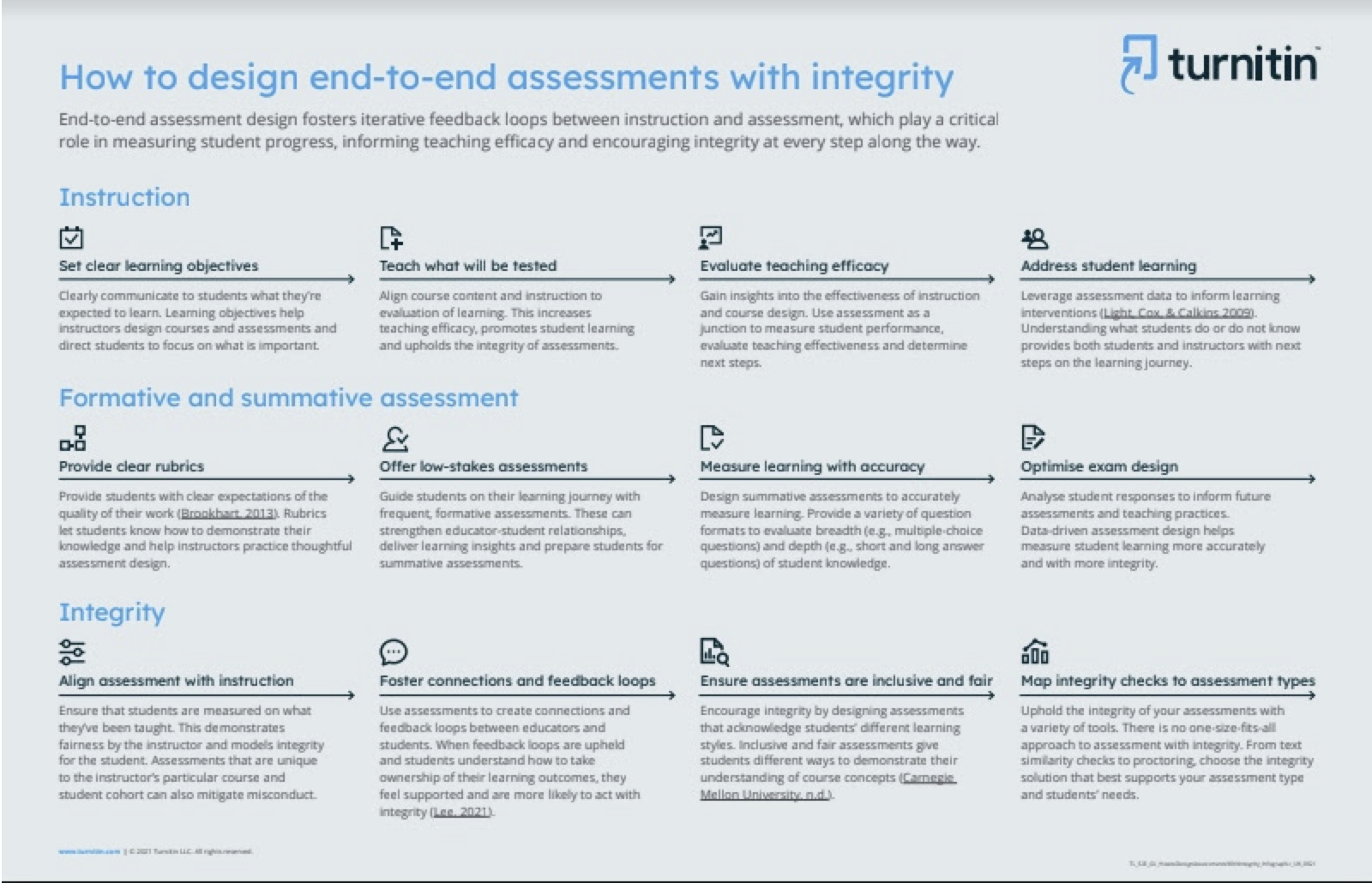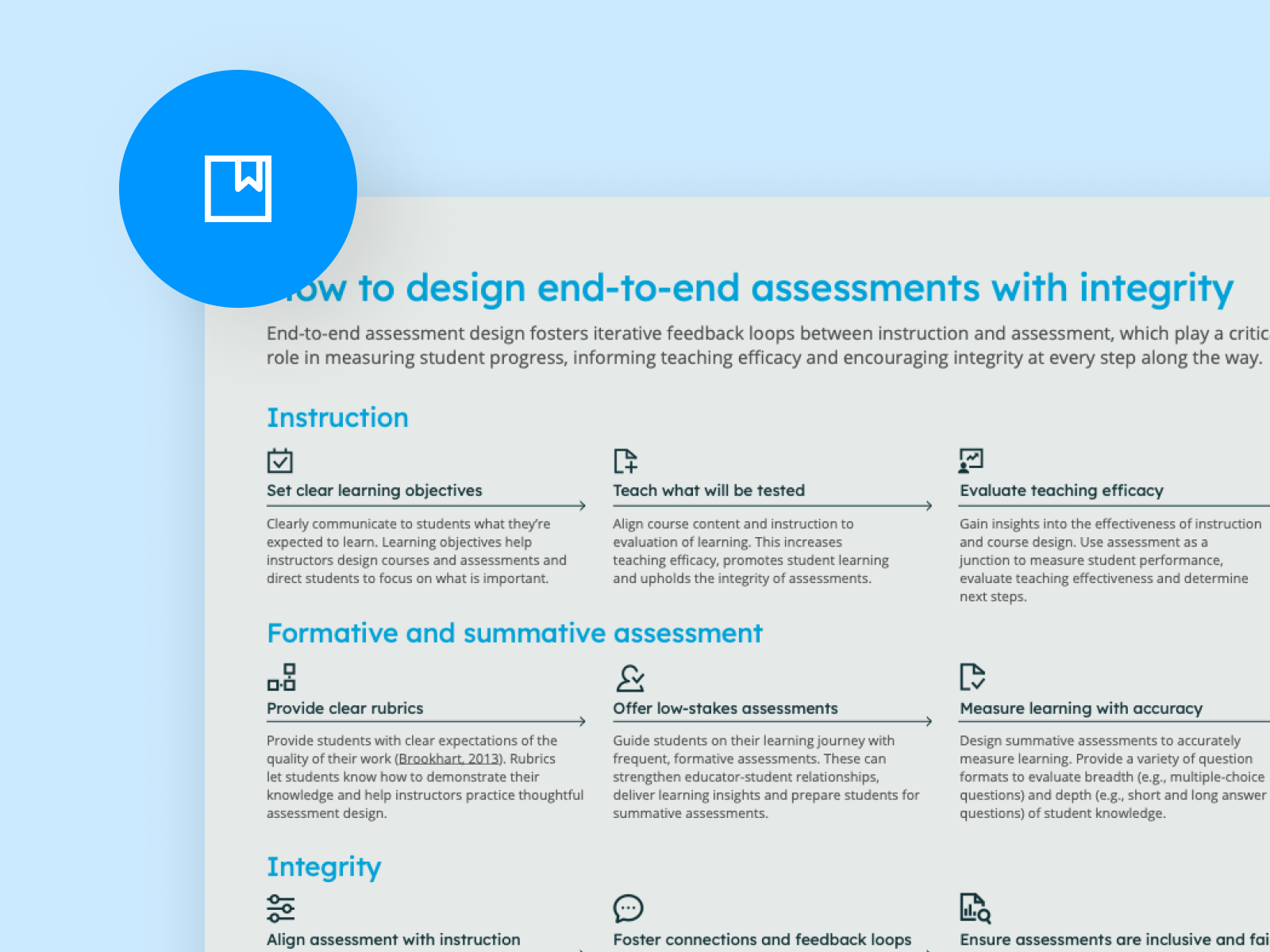Bridging the gap between teaching and learning is addressed head-on through end-to-end assessment, but do you know the key elements for designing it in any learning environment?
Furthermore, academic integrity as a validation of learning outcomes has taken on new significance in remote and hybrid learning environments, and must be front and centre in end-to-end assessment design.
We’ve built a detailed infographic resource to help educators cover off important considerations in their end-to-end assessment framework, such as iterative feedback loops that play a critical role in measuring student progress, informing teaching efficacy and encouraging integrity at every step of the way.
What it covers:
- Aligning instruction techniques with learning objectives
- Tips for conducting summative and formative assessment from rubrics to data analysis
- Embedding academic integrity across different assessment types
Download the infographic resource




